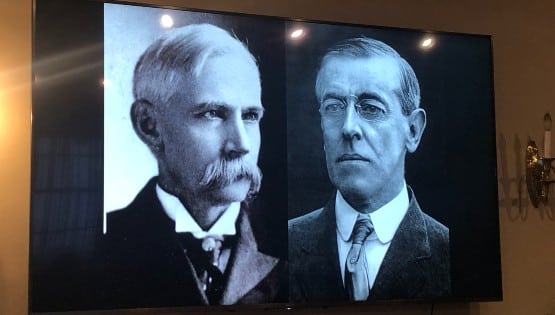Something All Elite Wrestling CEO Tony Khan said in his interview with “Stone Cold” Steve Austin earlier this month about house shows got me to thinking.
First, to what he said: that, basically, AEW won’t run its talents ragged running endless tours of house shows.
Khan said the company will run 100-120 live events a year, which, when you do the math, accounting for 52 of those live events being live weekly TV, and four more of those being the quarterly pay-per-views that AEW will run, means maybe another 40-60 more live events, total.

When you hear the reasoning offered by Khan as to why – related to the endless tours running the talent ragged – you get the idea that the business plan may not include really any other shows that don’t have something to do with TV.
Here’s what it got me to thinking: how WWE does with its house shows.
I went to looking at the company’s most recently quarterly report, for the first quarter of 2019.
As I suspected, WWE reported a net loss on live events for the first quarter on its live events, and what’s interesting there is, live events isn’t just house shows – shows not held at venues that are broadcast on TV, pay-per-view or the WWE Network.
Those shows coinciding with live broadcasts traditionally do very well at the gate, because of the lure of being able to be a part of the show.
House shows don’t offer that extra benefit, and by now you also know if you’re going to a house show that you’re not really going to see much; for example, you’re not going to see a title change at a house show.
So, then, factor that in, and then consider that WWE lost $200,000 on live events in the first quarter in that context.
I looked back at 2018 for a deeper frame of reference, and WWE did report $1.4 million in net operating income from live events in the fourth quarter of 2018, and $16.6 million for the year in full, so maybe this is a temporary blip.
Even so, the amount of revenue for the entire year – $144.2 million – was 15.5 percent of the overall revenue flow for WWE in 2018.
The great bulk of revenues comes from TV, pay-per-view and the WWE Network – 73.4 percent in calendar-year 2018 – and it was the media category that was the area of almost all of the new money coming into WWE’s coffers in 2018.
The company reported bringing in $149.8 million in new revenues from TV, pay-per-view and WWE Network sources in 2018 over what it had done in 2017, as live-event revenues declined $7.5 million on a year-to-year basis.
Which gets me to this point: why continue to run your stars down having them on the road five or six days a week when you’re not making money doing so?
Cutting back on the road schedule solves so many problems for WWE. For starters, there’d be no need to maintain the artificial brand split between “Raw” and “Smackdown” that is proving to be a problem now that the company has its signature weekly TV shows on different networks, with “Raw” remaining on USA in the fall, and “Smackdown” moving to Fox on Friday nights with the start of the fall TV season.
Both broadcast networks are putting pressure on WWE to have the entire roster of superstars available for their weekly shows, for probably obvious reasons, mainly centered around, we’re not paying billions to get half of the big names, we want them all.
The next most obvious benefit to WWE to a reduced live-event schedule is what Khan was getting at in his explanation to Austin as to why AEW isn’t prioritizing the live-event business: the less wear and tear on the talents.
We shouldn’t have to point out that the talents are not only being asked to plane, train and automobile their way across the U.S. and the globe 300 nights a year, but also, the very nature of their jobs is physical, requiring maintained top-level fitness and rehab from injuries, or at the least the wear and tear of accumulated bumps in the ring.
Khan talked up how the reduced travel schedule should show through in the quality of the TV and pay-per-view product from AEW. Sure, AEW’s guys and gals are going to get injured in the ring, just like anybody working anywhere else in the combat-theater business is going to get injured from time to time, but you’re talking less exposure with the reduced work schedule, and more time to recover between events, and more time in between to work on fitness to maybe make injuries less likely.
This all just seems to make sense, especially, again, when you consider that house shows not only don’t seem to add to the bottom line, but may actually be losing gobs of money.
McMahon’s answer to investors on WWE’s first-quarter results call was to suggest that live-events numbers were down because top-level stars like Roman Reigns and Seth Rollins were injured, and that the company was looking to streamline some things in house to try to improve on results for the future.
Reported turnouts at house shows and even major events like this past weekend’s “Stomping Grounds” pay-per-view suggest that something more systemic is afoot.
WWE, as a corporate entity, hasn’t seemed capable of being able to adjust to these kinds of market changes very well in recent years.
It’s to Khan’s credit that he is steering AEW away from the model that has traditionally worked for pro-wrestling companies, but doesn’t seem to be working anymore.
This recognition will also work out well for AEW talents, who won’t be asked to abuse their bodies to sustain a business model that is doomed to lose money.
Story by Chris Graham










